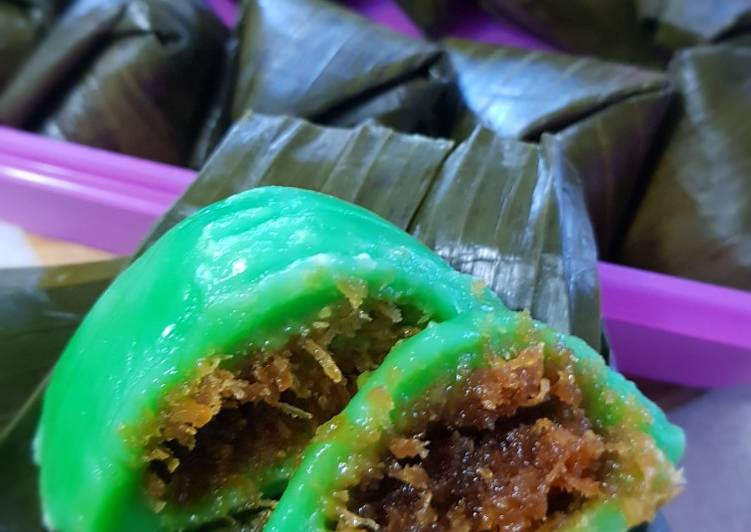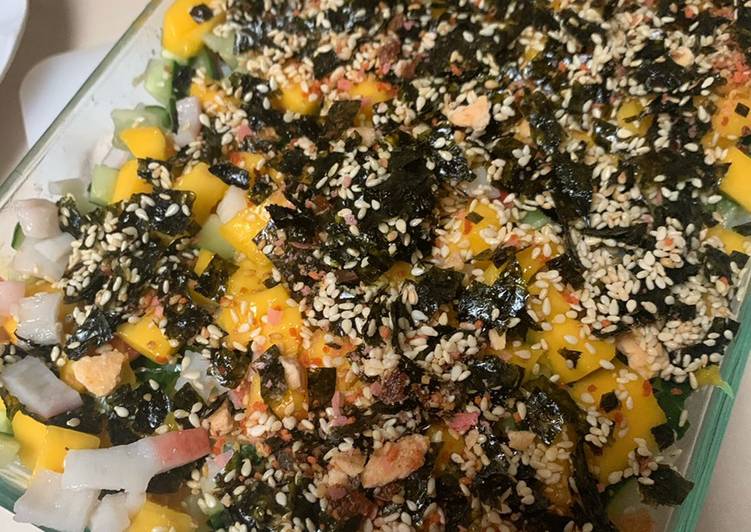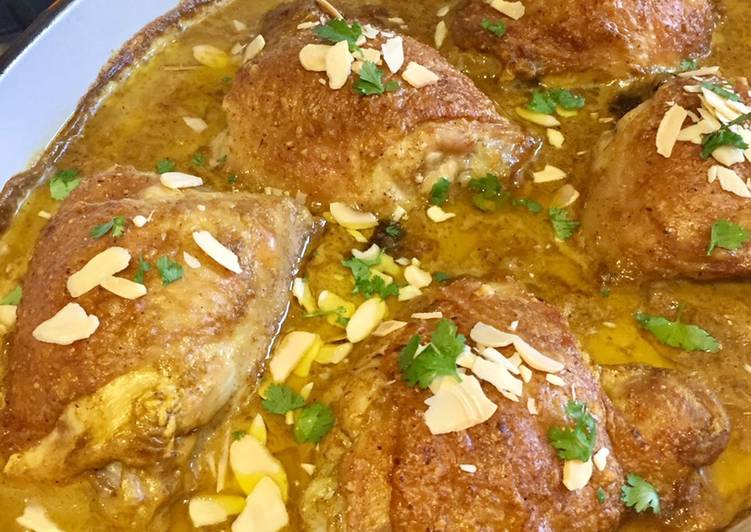
Hey everyone, hope you’re having an incredible day today. Today, I will show you a way to make a special dish, kue bugis/ kue mendut / kue lapet. One of my favorites. This time, I’m gonna make it a bit unique. This is gonna smell and look delicious.
KUE BUGIS/ KUE MENDUT / KUE LAPET is one of the most popular of current trending foods in the world. It’s easy, it is fast, it tastes delicious. It’s enjoyed by millions every day. KUE BUGIS/ KUE MENDUT / KUE LAPET is something which I’ve loved my whole life. They’re nice and they look fantastic.
The name is suggested to be related to Bugis ethnic group of South Sulawesi as their traditional delicacy, and it is originated from Makassar. kue bugis/ kue mendut / kue lapet Kue bugis is Indonesian kue or traditional snack of soft glutinous rice flour cake, filled with sweet grated coconut. The name is suggested to be related to Bugis ethnic group of South Sulawesi as their traditional delicacy, and it is originated from Makassar. Kali ini saya membuat kue tradisioanal ini untuk acara arisan keluarga 😊 Buatnya gampang banget.dan cocok banget untuk acara.
To get started with this recipe, we have to first prepare a few components. You can have kue bugis/ kue mendut / kue lapet using 14 ingredients and 4 steps. Here is how you cook it.
The ingredients needed to make KUE BUGIS/ KUE MENDUT / KUE LAPET:
- Prepare For the Dough:
- Take 500 grams white glutinous rice flour
- Take 350 ml thick coconut milk
- Take 2 tablespoon white sugar
- Prepare 1/2 tablespoon salt
- Prepare 4 tablespoons cooking oil
- Get 3 drops food coloring grean (Pandanus Paste)
- Take Banana leaves enough to wrap
- Take For the Filling (Untie):
- Prepare 500 grams grated coconut
- Get 350 gram brown sugar (palm sugar)
- Take 250 ml boiled water
- Make ready 5 tablespoons granulated sugar (can be adjusted according taste)
- Take 1 tablespoon salt or to taste
Cara membuat mendut masih menggunakan cara tradisional sehingga aman dikonsumsi dan terjaga cita rasanya. Resep membuat mendut bisa anda praktekan di rumah. cara membuat kue bugis ketan. Kue bugis ketan hitam enak, manis, dan lembut. Resep kue bugis ketan hitam hanya menggunakan bahan bahan seperti tepung ketan, gula pasir, dan santan.
Instructions to make KUE BUGIS/ KUE MENDUT / KUE LAPET:
- To make Filling/ Untie : Cook all ingredients untie, brown sugar, pandan leaves until boiling. After boiling, add grated coconut and stir until smooth, then cook until thick and and little bit dry. Turn off the heat then let it cool.
- For the Dough: In the bowl, mix the sticky rice, sugar, and salt, stir well. - Pour coconut milk, cooking oil, and pandanus paste (food coloring) little by little, then stir the mixture until the mixture is smooth but not mushy. - Take a banana leaf, then give the sticky rice in the middle and round. Punch banana leaves, then give a circle Untie Coconut.
- Fold the end of the leaf that is not conical toward the front, then pull the leaf forward into a cone. Do the same for the right and left side of the leaf, until the conical lock is conical. Repeat until all the dough is used. - Heat the steam / pan. Steamed cake until cooked and banana leaves turn brownish. Lift.
- Serve dor your afternoon tea or coffee, or for gathering with friends.
Bagaimana cara membungkus kue bugis supaya tampilannya bagus. Inilah petunjuk lengkap cara membuat kue bugis ketan yang lembut dan enak. Lihat juga resep Lapek bugih/ kue bugis enak lainnya. Sekilas Lapek Bugih ini akan mirip dengan sama dengan kue bugis di Betawi atau kue mendut di Jawa Tengah. Jika di Jawa menggunakan ketan putih dan bahan isian enten dibuat dengan campuran gula merah, sedangkan di Sumatra Barat menggunakan tepung ketan hitam dan ketan putih yang dicampur dengan gula pasir.
So that is going to wrap it up with this exceptional food kue bugis/ kue mendut / kue lapet recipe. Thank you very much for reading. I am confident you will make this at home. There is gonna be more interesting food in home recipes coming up. Don’t forget to bookmark this page in your browser, and share it to your family, friends and colleague. Thanks again for reading. Go on get cooking!

